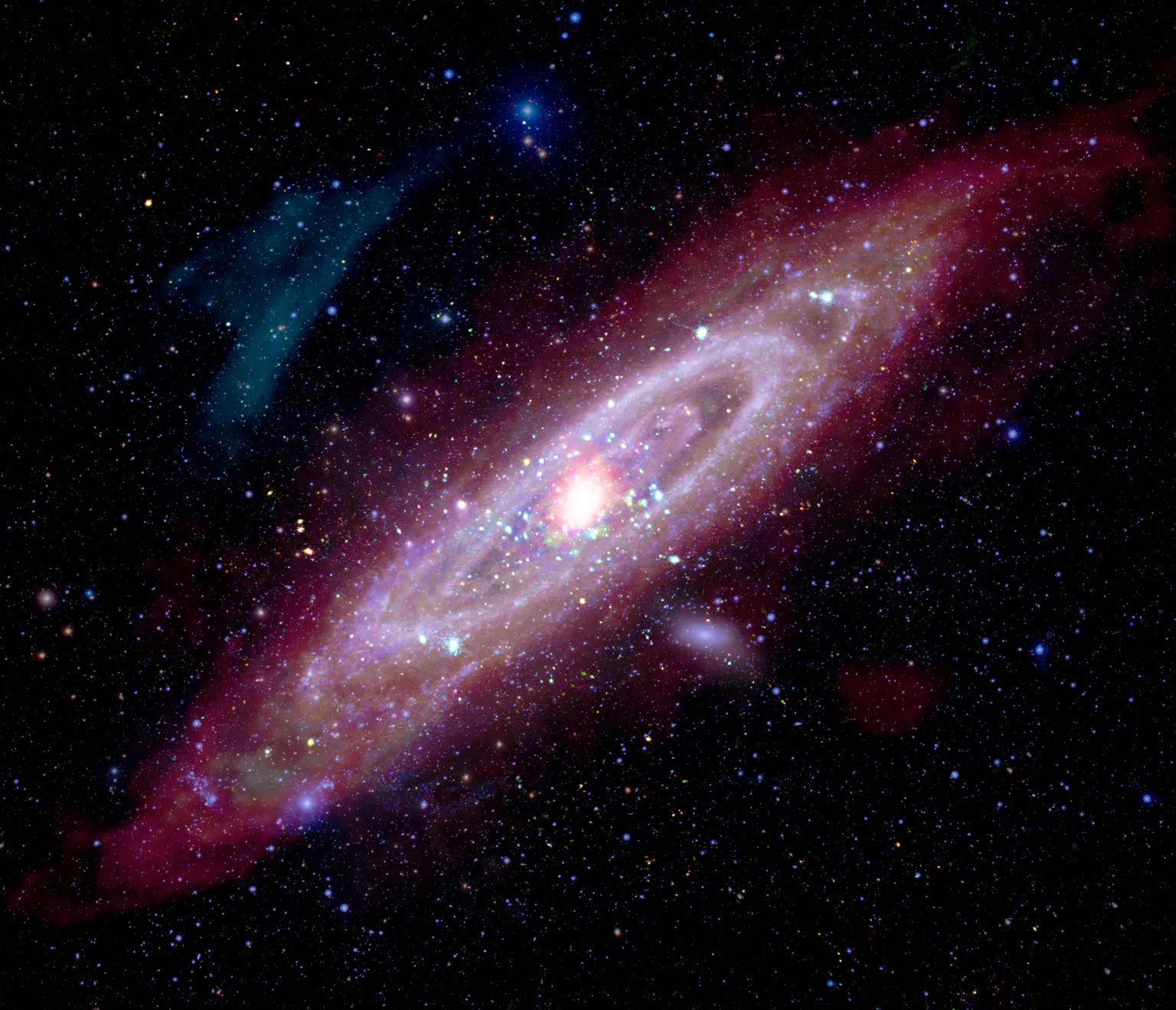Andromeda Galaxy Dark Matter: Tribute to Dr. Vera Rubin

A Tribute to Dr. Vera Rubin and the Discovery of Dark Matter
The Andromeda galaxy dark matter story began in the 1960s, when Dr. Vera Rubin and her team made a groundbreaking observation. While studying the motion of stars in Messier 31 (M31), better known as the Andromeda galaxy, they noticed something unusual. Stars at the outer edges rotated just as quickly as those near the center. According to Newtonian physics, this shouldn’t have been possible.
Rubin proposed that a mysterious, invisible mass must be affecting the galaxy’s rotation. This unknown substance later became known as dark matter. Her findings not only challenged existing theories but also reshaped how scientists understand galaxies. On June 25, 2025, NASA released a new image of the Andromeda galaxy to celebrate Rubin’s contributions. It honors the woman who helped uncover one of the universe’s greatest mysteries.
Andromeda as a Tool to Study Spiral Galaxies
The Andromeda galaxy is located about 2.5 million light-years from Earth. It is the closest spiral galaxy to the Milky Way. Because we are inside the Milky Way, observing its structure from within is extremely difficult. Therefore, astronomers study Andromeda as a reference to better understand galactic structure and evolution.
In addition, Andromeda provides a clear external view of a spiral galaxy influenced by dark matter. Researchers analyze its behavior to test models of galaxy formation and rotation. The Andromeda galaxy dark matter connection continues to be vital in explaining why galaxies don’t fly apart, despite their high rotational speeds.
Understanding the Galaxy Through Multi-Wavelength Imaging
NASA’s new image combines many forms of light to reveal different details. X-rays expose hot gas and supernova remnants. Ultraviolet and optical light highlight young, massive stars and star-forming regions. Meanwhile, infrared wavelengths trace cooler dust lanes. Radio data maps the large-scale structure and hydrogen gas spread throughout the galaxy.
By layering all these observations, scientists can distinguish between visible mass and the mass influenced by dark matter. This method allows for a more complete understanding of the forces shaping Andromeda.
A Sound Experience: Listening to Light
In a creative twist, NASA also released a sonified version of the image. Sonification converts light data into sound. In this version, brighter regions produce higher musical notes, while dimmer regions result in lower tones. As a result, listeners can experience the galaxy’s shape and energy through sound.
This approach makes complex science more accessible to a broader audience. In particular, it allows people with visual impairments to engage with astronomical data in a meaningful way.
Looking to the Future: Merging with the Milky Way
Eventually, Andromeda and the Milky Way will collide and merge into one galaxy. Scientists estimate this will happen in about four billion years. Until then, astronomers will continue to study Andromeda to understand galaxy mergers, dark matter, and the future of our cosmic neighborhood.
Dr. Vera Rubin’s legacy lives on through every image, discovery, and question inspired by her work. The Andromeda galaxy dark matter relationship remains one of the most fascinating topics in astrophysics. And thanks to Rubin’s bold insight, we now know there’s far more to the universe than meets the eye.
Learn more about this image and experience in sound, too.
Image credit:
X-ray: NASA/CXO/UMass/Z. Li & Q.D. Wang, ESA/XMM-Newton
Infrared: NASA/JPL-Caltech/WISE, Spitzer, NASA/JPL-Caltech/K. Gordon (U. Az), ESA/Herschel, ESA/Planck, NASA/IRAS, NASA/COBE
Radio: NSF/GBT/WSRT/IRAM/C. Clark (STScI)
Ultraviolet: NASA/JPL-Caltech/GALEX
Optical: Andromeda, Unexpected © Marcel Drechsler, Xavier Strottner, Yann Sainty & J. Sahner, T. Kottary
Composite image processing: L. Frattare, K. Arcand, J. Major


Andromeda Galaxy Dark Matter: Tribute to Dr. Vera Rubin – AstroDrive
[url=http://www.g2j0942082pbjfb1w94rsq693f16bfcos.org/]uhmsbtohjxf[/url]
ahmsbtohjxf
hmsbtohjxf http://www.g2j0942082pbjfb1w94rsq693f16bfcos.org/
ABCrummybet.. Now that sounds interesting. How are the odds and the selection here? Is it a good spot to have a punt at? Let me know if you guys have experience on the platform. More right here: abcrummybet
Sup everyone, I just used bet88comvn. I managed to cash out which is bloody good! It’s a pretty alright website: bet88comvn
Peso63login, eh? Sounds promising! Trying to find a reliable place to log in and have some fun. Going to give it shot. Learn more here: peso63login